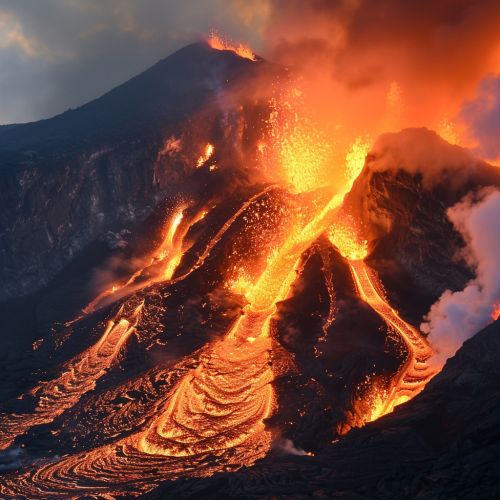Pyroclastic Surge
Introduction
A Pyroclastic Surge is a ground-hugging avalanche of hot ash, pumice, rock fragments, and volcanic gas that rushes down the side of a volcano as fast as 100 km/hour or more. The temperature within a pyroclastic surge can be greater than 500°C, sufficient to burn wood. During the eruption of Mount St. Helens, pyroclastic surges were observed to knock down nearly every tree within a radius of 8 km from the summit.


Formation
Pyroclastic surges form during both effusive and explosive volcanic eruptions. In explosive eruptions, the surge is often associated with a pyroclastic flow, a similar but denser and slower-moving phenomenon. The surge forms when the pyroclastic flow becomes dilute, either because it has lost material by deposition or because it has mixed with air. In effusive eruptions, the surge forms when a lava dome collapses or when a lava flow encounters water, generating steam explosions.
Characteristics
Pyroclastic surges are less dense than pyroclastic flows, and so they can move over higher topographic obstacles and can also move independently of valleys. The surge is a turbulent, dilute cloud that hugs the ground, with the majority of its particles kept aloft by the turbulence. The temperature, speed, and particle concentration within a pyroclastic surge can vary greatly, leading to highly variable effects on the ground. The surge can deposit a layer of ash and other volcanic material, known as a surge bed, which can vary in thickness from a few centimeters to several meters.
Hazards
The primary hazards from a pyroclastic surge are heat, impact from flying debris, and suffocation. The high temperature of the surge can cause severe burns and can ignite fires. The impact of flying debris can cause injury or death, and the high concentration of ash and gas in the surge can cause suffocation. In addition, the surge can cause extensive damage to buildings and infrastructure, and can bury or destroy vegetation.
Notable Pyroclastic Surges
Several notable pyroclastic surges have occurred in historical times. The eruption of Mount Vesuvius in AD 79 produced a series of pyroclastic surges that destroyed the Roman cities of Pompeii and Herculaneum. The eruption of Mount St. Helens in 1980 produced a lateral blast that was essentially a pyroclastic surge, which flattened forests and killed 57 people. The eruption of Mount Pinatubo in 1991 produced a series of pyroclastic surges that caused extensive damage and loss of life.
